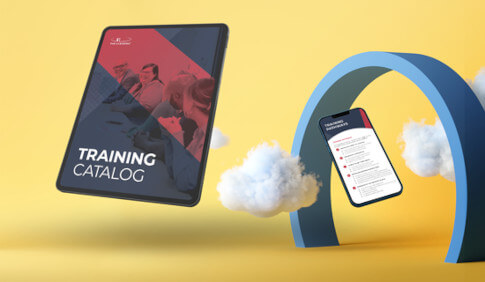Like many of you, I’ve been engaged in ongoing dialogues about the hybrid work environment. Hybrid is not new by any means; however, some organizations never thought hybrid was possible for them. The pandemic became the impetus for many workplace changes, including a sudden (and necessary) shift into a work-from-home environment for many folks who previously spent their working days in an office – and organizations that thought a hybrid or WFH model wouldn’t work for them.
For many, that shift was welcome, eliminating long commutes and allowing for more time with family without negative impacts on productivity. Others missed the energy of their offices and were eager to return. With vaccination rates continuing to rise, more organizations are exploring opportunities to return to the office (while taking into consideration the safety of their people given the prevalence of the Delta variant) – and in some cases, unintentionally creating a divide between those working from home, in the office, or in a hybrid capacity.
“A hybrid model is more complicated than a fully remote one. At scale, using it will be an unprecedented event in which all kinds of norms that have been accepted practice for decades will be put to the test. Leaders are a long way from knowing how it will work.”- McKinsey Quarterly
Expectations vs. Reality
There are inconsistencies between what executives expect and what their employees may want or need related to re-entry. According to a recent McKinsey Quarterly article, more than three-quarters of C-suite executives surveyed report they expected the typical “core” employee to be back in the office three or more days a week. On the other hand, the same survey showed nearly three-quarters of around 5,000 surveyed employees would like to work from home for two or more days per week, and more than half want at least three days of remote work.
This is not a right versus wrong scenario. In fact, it gives us the opportunity to optimize our staffing models given what we now know about our ability to be productive in this ambiguous environment. The hybrid model will have continued relevancy and leaders will need to consider new and creative ways to optimize it (at scale and more explicitly define what hybrid means to your organization). That means leaders must start now to foster inclusivity in this environment to avoid a “us vs. them” situation between those that work from the office or out of the office.
“As leaders, we need to ensure our teams feel supported, engaged, and have the ability to perform at their best, even if they are working in a new model (hybrid or otherwise.)”
What to Consider When Thinking About Inclusivity
As The Clearing’s Diversity, Equity, Inclusion, and Access (DEIA) Executive Sponsor, the question of inclusivity in this environment has been top of mind. We focus on a “people-first” approach to problem-solving with our clients – we think “inside-out” about how an organization’s employees are impacted by a given situation to create solutions that help people feel safe and provide what they need to do their best work. To that end, our Workplace team has pulled together four critical areas leaders must examine when it comes to inclusivity in the hybrid workplace to ensure their people feel safe, supported, and empowered to thrive.
1. Does your organization have the right technology in place?
We have found that default technology can cause significant inequities in how people experience the hybrid workplace. Leaders should now assume every meeting is hybrid to avoid unintentionally leaving people out of the conversation. Check out our Hybrid Meetings Technology Checklist to ensure your tech setup meets the needs of in-person and remote team members. Remember to establish cultural norms around the use of that technology. For example, is everyone expected to be on camera? If so, leaders must set that example.
2. Do your people have the necessary access to that technology?
Home WiFi network connectivity is inconsistent due to geographic location, network provider availability, affordability of various network packages, among a variety of other reasons. This can cause some unintended inequities in the hybrid workplace. And depending on your line of business, your people may not be in the office OR at home – they could be on the road or at client sites. Ask yourself:
- Should upgraded home internet become a company benefit to guarantee team members don’t have to turn their cameras off due to low bandwidth? This can ensure no one is out of sight, out of mind – and curbs perceptions that some people are contributing less simply because they are not seen.
- Can my team easily gain access to required systems in a remote setting? Nothing is more frustrating than not being able to get your job done simply because of an antiquated VPN system or closed networks that require being in a specific location to access. These are experiences that we may overlook that can lead to people feeling excluded simply because they may not be able to come into the office.
3. Do you have the right people “at the table?”
Again, the adage “out of sight, out of mind” holds true: for decades, the equity gap in the workplace has been defined by who is invited to the table. Gender, color, and age (and other identity characteristics) often dictated that, intentionally and unintentionally. Now that many more people are remote (and potentially out of sight), this equity gap is at risk of getting bigger across demographics.
Pro Tip: Who is at your table informs your collective success. That means be intentional when planning meetings. Ask yourself:
- What is your desired outcome?
- Who should be there?
- Is there equity? That is, do you have the right backgrounds of experience, gender balance, race balance, and roles/levels to enable decision-making and ensure relevance to stakeholders?
This enables leaders to make decisions that best enable desired outcomes and are reflective of the interests and demographics of your customers, your organization, and your partners.
4. Are you facilitating knowledge sharing across teams and locations?
Despite the flexibility the hybrid model offers, there can be a significant loss of information sharing that occurs simply from people being close to one another. For example, your teams may no longer know what is happening on other projects if they are not in the office. This limits their ability to hear what their colleagues may be working on that can add value to their own project or where their expertise may be helpful. That is suddenly lost in this new environment. Few things make people feel more excluded than feeling out of the loop. This makes it critical to facilitate knowledge sharing in novel ways that work for your organization. Here are a few creative ideas to consider:
1) Invite colleagues to join your team meetings to share what they’re working on. Have them provide an explanation and prepare some probing questions to further the discussion. (e.g., “What are you most proud of that your project accomplished? Why?”; “Was there something that you thought was going to be successful but missed the mark? What did you learn?”). Similarly, include more junior team members in leadership meetings so they can hear what and how you’re prioritizing across the organization, how decisions are made, and gain other relevant knowledge for their career growth.
2) If you have new team members, consider inviting a tenured colleague to team meeting(s) to talk about their journey and answer questions.
3) Use your internal communication platform(s) (e.g., Slack) to stay connected, not just about the work of the day, but also to encourage sharing exciting news, personal achievements, and opportunities. It’s a fun way to learn more about each other.
4) Facilitate connections between individuals across teams. Do you see shared interests or problem sets between two individuals across teams? Connect those individuals so they can explore their shared connections for informal knowledge sharing, increased social connectivity, and additional innovation across teams.
5) Encourage “brain trusts” where individuals across teams come together to solve a particular problem. These “brain trusts” lead to better solutions and highlight interconnectedness between individuals’ skill sets to spur subsequent connections.
What Comes Next
Leaders have been challenged to establish new ways of doing work, engaging with one another, and thriving despite daunting circumstances over the course of the last year and a half. How do we maximize our teams’ performance to achieve our strategic goals when we may not always “see” them as we once did?
As leaders, we need to ensure our teams feel supported, engaged, and have the ability to perform at their best, even if they are working in a new model (hybrid or otherwise). Facilitating inclusive working environments using some of the shifts above is a great first step to continue to create an engaging and safe work environment where your team can meet and exceed organizational goals.






 The Clearing’s Employee Experience
Improvement model, adapted from Itam
& Ghosh, 2020, focuses on three objectives:
The Clearing’s Employee Experience
Improvement model, adapted from Itam
& Ghosh, 2020, focuses on three objectives: 














